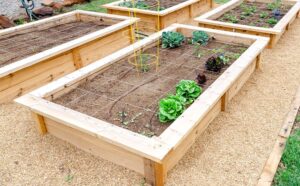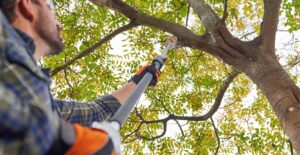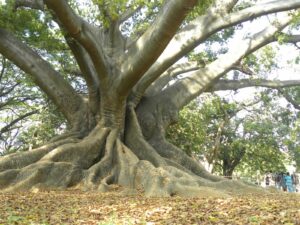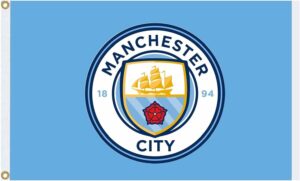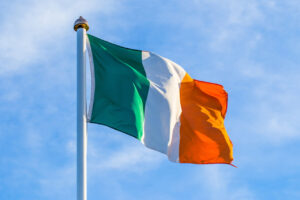A Comprehensive Guide of Tree Seed Pods Identification
Tree seed pods are an essential part of a tree’s reproductive process. These pods, which house the seeds of a tree, come in various shapes, sizes, and textures, offering a unique way to identify the species of tree they come from. Seed pods not only vary by species, but they also serve as a crucial ecological component, providing food and shelter for wildlife, and aiding in the dispersal of seeds.
In this article, we will provide an in-depth overview of tree seed pods identification in the U.S., focusing on various species, their seed pods’ specifications, and how to recognize them. We’ll also include a breakdown of the most common tree species in the U.S. and their seed pod characteristics, a table for easy reference, and some interesting facts about seed pods.
What Are Seed Pods?
Seed pods are structures that enclose the seeds of a plant, protecting them until they are mature and ready for dispersal. These pods vary in size, shape, and the way they release seeds. Some seed pods burst open to release seeds, while others drop to the ground with the seeds inside, ready to grow.
Types of Tree Seed Pods in the USA
The United States is home to numerous tree species with a variety of seed pods. These range from the large, woody cones of coniferous trees to the papery samaras of maples, to the pea-like pods of leguminous trees. The diversity of seed pod shapes and designs makes identifying trees by their pods an engaging process.
Below is a table showing the most common tree species in the U.S., their corresponding seed pod characteristics, and the percentage of trees that produce them.
| Tree Species | Seed Pod Type | % Share in U.S. Tree Population | Description of Pod |
|---|---|---|---|
| Maple (Acer spp.) | Samara | 12% | Paired, winged pods that spin as they fall |
| Oak (Quercus spp.) | Acorn | 15% | Hard, woody pod with a cap, housing a single seed |
| Pine (Pinus spp.) | Cone | 20% | Large, woody cone with scales |
| Ash (Fraxinus spp.) | Samara | 6% | Single-winged, elongated pods |
| Redbud (Cercis spp.) | Legume | 4% | Flat, pea-like pods |
| Sweetgum (Liquidambar spp.) | Gumball-like capsule | 5% | Spiky, ball-shaped capsule containing many seeds |
| Magnolia (Magnolia spp.) | Follicle | 3% | Woody pods with red seeds that burst open |
| Birch (Betula spp.) | Catkin | 7% | Long, drooping pods with tiny seeds |
| Elm (Ulmus spp.) | Samara | 8% | Small, round winged pods |
| Locust (Gleditsia spp.) | Legume | 3% | Long, dark-colored, bean-like pods |
Maple Trees: The Helicopter Seeds

- Seed Pod Type: Samara (commonly referred to as “helicopter seeds”)
- Identification: Maple seed pods are paired samaras that spin like helicopter blades when they fall. Each samara has a seed attached to a flat, papery wing, which helps the wind carry the seed far from the parent tree.
- Facts:
- Silver Maple produces the largest samaras, up to 2 inches in length.
- Maples use wind dispersal to spread their seeds, making them highly efficient at colonizing new areas.
- Common Uses: Maple seeds are often collected for planting, and the trees are a valuable timber source.
Oak Trees: Acorns
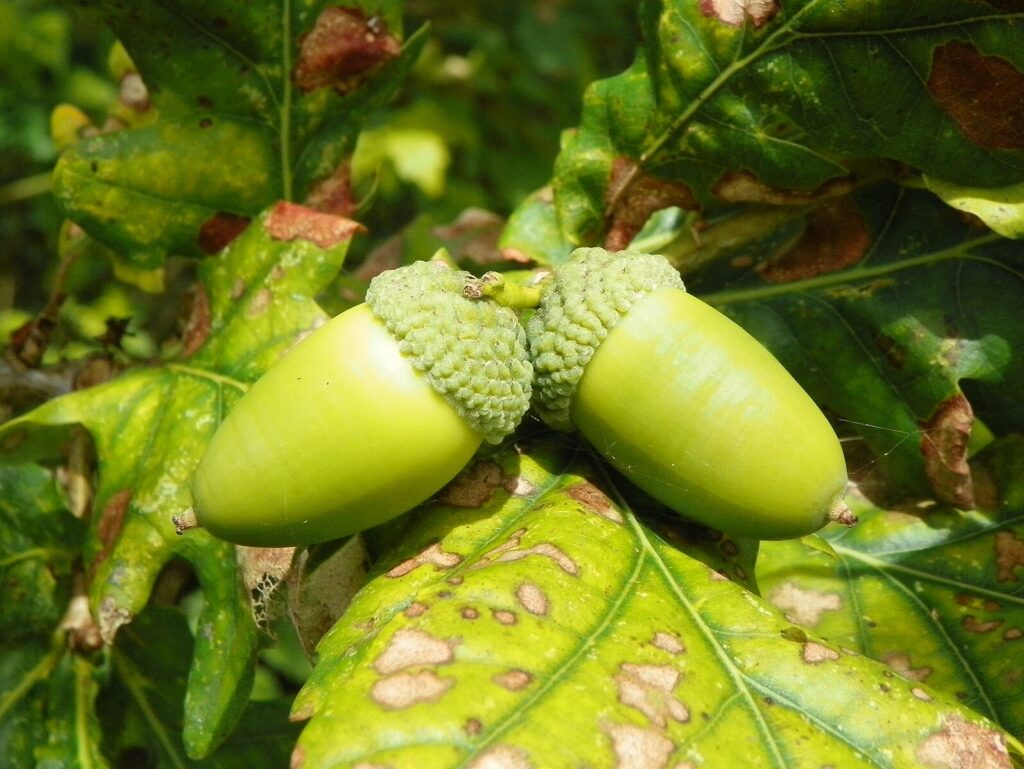
- Seed Pod Type: Acorn
- Identification: Acorns are hard, woody seed pods with a cap at the top. They house a single seed and are common under oak trees, dropping in autumn.
- Facts:
- White Oak produces sweet acorns, while Red Oak produces more bitter ones.
- Acorns are a primary food source for wildlife, including squirrels, deer, and birds.
- Common Uses: Oak trees are prized for their strong, durable wood, which is used in furniture and flooring.
Pine Trees: Cones

- Seed Pod Type: Cone
- Identification: Pine trees produce large, woody cones with overlapping scales. These cones protect the seeds until they are ready to be dispersed.
- Facts:
- Loblolly Pine cones can reach up to 6 inches long.
- Pine cones are commonly used in crafts and as decorative items, especially around the holidays.
- Common Uses: Pines are major timber trees and are also widely used as Christmas trees.
Ash Trees: Single-Winged Samaras

- Seed Pod Type: Samara
- Identification: Ash trees produce single-winged samaras that are long and slender. They often appear in clusters and turn brown as they mature.
- Facts:
- Green Ash samaras can grow up to 3 inches long.
- Ash trees are particularly vulnerable to the Emerald Ash Borer, an invasive pest.
- Common Uses: Ash wood is strong and flexible, making it ideal for making baseball bats and tool handles.
Redbud Trees: Pea-Like Pods

- Seed Pod Type: Legume
- Identification: Redbud seed pods are flat, pea-like structures that grow in clusters. They are dark brown when mature and can remain on the tree throughout winter.
- Facts:
- The Eastern Redbud is famous for its vibrant pink flowers in spring.
- Redbuds are native to the eastern U.S. and are commonly planted as ornamental trees.
- Common Uses: Redbud trees are valued for their aesthetic appeal in gardens and landscapes.
Sweetgum Trees: Spiky Capsules

- Seed Pod Type: Gumball-like Capsule
- Identification: Sweetgum trees produce spiky, ball-shaped seed pods that resemble gumballs. These pods contain multiple seeds and can be a nuisance when they fall.
- Facts:
- Sweetgum trees are one of the few species that can grow in swampy conditions.
- The gumball-like pods are often used in crafts and holiday decorations.
- Common Uses: Sweetgum trees are grown for their timber, which is used in flooring and furniture.
Magnolia Trees: Woody Follicles

- Seed Pod Type: Follicle
- Identification: Magnolia seed pods are woody structures that open to reveal bright red seeds inside. The pods are often cone-shaped and can remain on the tree after the seeds are dispersed.
- Facts:
- Southern Magnolia produces large, fragrant flowers in addition to its interesting seed pods.
- Magnolia seeds are a favorite food of birds and small mammals.
- Common Uses: Magnolias are planted primarily as ornamental trees for their beauty and fragrance.
Birch Trees: Catkins

- Seed Pod Type: Catkin
- Identification: Birch trees produce long, drooping seed pods called catkins, which contain tiny seeds. These pods are often mistaken for flowers due to their elongated, cylindrical shape.
- Facts:
- Paper Birch has distinctive white bark that peels off in layers.
- Birch catkins are an important food source for birds and small animals.
- Common Uses: Birch wood is used in furniture, plywood, and as firewood.
Elm Trees: Small, Round Samaras

- Seed Pod Type: Samara
- Identification: Elm seed pods are small, round samaras with a thin, papery wing that helps them float through the air. The seeds are dispersed by wind, typically in early spring.
- Facts:
- American Elm was once one of the most common street trees in the U.S. before being decimated by Dutch elm disease.
- Elm samaras are a critical part of the tree’s reproductive process, allowing it to spread widely.
- Common Uses: Elm wood is tough and durable, often used in construction and boat-building.
Locust Trees: Long Bean-Like Pods

- Seed Pod Type: Legume
- Identification: Locust trees produce long, bean-like seed pods that can be dark brown or black. These pods often remain on the tree well into winter, providing food for wildlife.
- Facts:
- Honey Locust trees have thorny branches and produce large seed pods that can be up to a foot long.
- The pods are a favorite of deer and other herbivores.
- Common Uses: Locust wood is highly resistant to rot and is used for fence posts and outdoor furniture.
Tree Seed Pod Identification: Quick Reference Guide
Here’s the table created from the provided content:
| Seed Pod Type | Common Tree Species | Characteristics | Dispersal Method |
|---|---|---|---|
| Samara | Maple, Ash, Elm | Winged seeds that spin or float in the air | Wind |
| Acorn | Oak | Hard, woody capsule with a single seed | Gravity, animals |
| Cone | Pine | Woody structure with scales that open to release seeds | Wind |
| Legume | Redbud, Locust | Long, flat, bean-like pods | Gravity, animals |
| Gumball-like Capsule | Sweetgum | Spiky, ball-shaped pod containing many seeds | Gravity, animals |
| Follicle | Magnolia | Woody cone-like pod with bright red seeds | Gravity, birds |
| Catkin | Birch | Long, cylindrical pod with tiny seeds | Wind |
Frequently Asked Questions (FAQs)
- What is the most common seed pod in the U.S.?
The most common seed pod is the samara, produced by species like maple and ash trees, thanks to its efficient wind dispersal system. - How do I identify tree seed pods?
Identify tree seed pods by observing their shape, size, texture, and the way they release seeds. Common pod types include samaras, cones, and legumes. - Which tree produces helicopter seeds?
Maples are known for their helicopter seeds, or samaras, which spin as they fall to the ground. - Do all trees have seed pods?
No, not all trees produce seed pods. Some, like pine trees, produce cones, while others may use different methods of seed dispersal. - What are acorns?
Acorns are the seed pods of oak trees. They are hard, woody capsules that contain a single seed and are an important food source for wildlife. - What trees produce bean-like seed pods?
Trees in the legume family, such as redbuds and locusts, produce bean-like seed pods that resemble peas or beans. - How do pine cones release seeds?
Pine cones open their scales in dry conditions, allowing the wind to disperse the seeds from inside. - What are catkins?
Catkins are long, drooping seed pods produced by trees like birches. They contain tiny seeds that are dispersed by the wind. - Are all samaras the same size?
No, samaras vary in size depending on the tree species. Maple samaras are larger than those of ash or elm trees. - Do animals eat seed pods?
Yes, many animals, including birds, squirrels, and deer, eat seed pods. Acorns, for example, are a staple food for many wildlife species. - Can I plant tree seeds from pods?
Yes, you can plant tree seeds from pods, but it often requires proper timing and preparation, such as cold stratification for some species. - What is the purpose of a seed pod?
The purpose of a seed pod is to protect and nurture the seed until it is ready for dispersal, ensuring the tree’s reproduction. - Do seed pods open on their own?
Some seed pods open on their own when they dry out, while others rely on external forces, such as animals or fire, to release the seeds. - Are sweetgum tree pods harmful?
Sweetgum tree pods are spiky and can be a nuisance when they fall, but they are not harmful. They can cause discomfort if stepped on. - Why do tree seed pods vary in shape?
Seed pod shapes vary to suit different methods of seed dispersal, including wind, water, animals, and gravity, each designed to optimize seed spread.
Conclusion
Tree seed pod identification is a fascinating way to better understand the trees around us. From the familiar acorns of oak trees to the helicopter-like samaras of maples, each seed pod tells a story about the tree it comes from. Understanding these structures not only helps in identifying tree species but also deepens our appreciation for the diverse strategies trees use to reproduce and thrive in their environments.
By paying attention to seed pods, you can gain insight into the natural world and even participate in the process of reforestation by collecting and planting seeds. Whether you’re walking through a forest, gardening, or simply observing trees in your neighborhood, the seed pods you encounter are a reminder of the vital role trees play in sustaining life on Earth.

